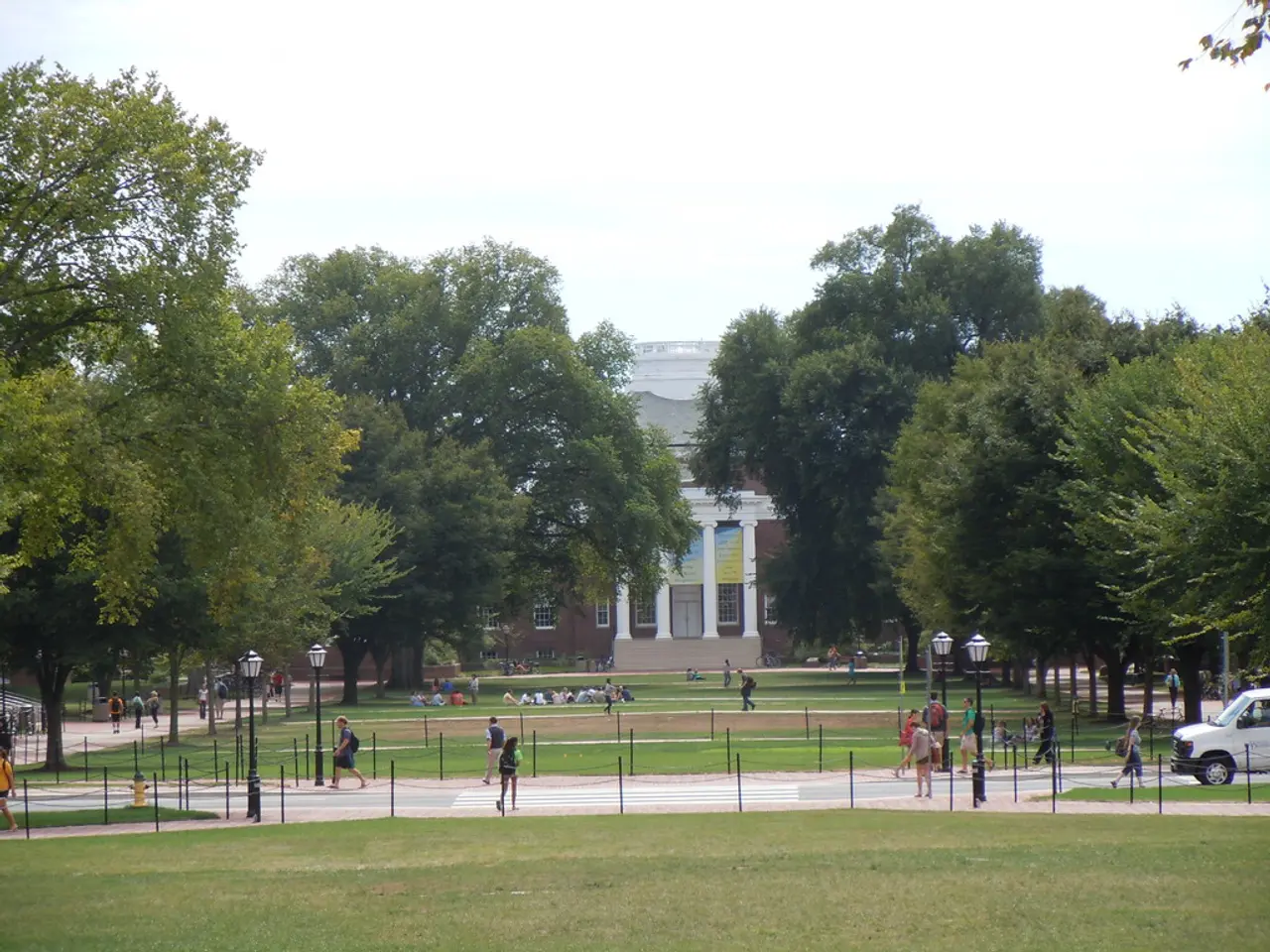Kew Gardens' Carbon Garden: A Real-life Guide to Combatting Climate Change
The Carbon Garden at Kew Gardens: A New Green Approach to Combat Climate Change
The Carbon Garden, a permanent installation at Kew Gardens, opened its doors in July 2025. Located within Kew's UNESCO World Heritage landscape, this innovative garden aims to educate visitors on the role of carbon in nature and its importance in combating climate change.
The garden is divided into three main thematic zones. The Climate Stripes Display with Herbaceous Perennials visually represents the Earth's rising temperatures over time, using plants with colours corresponding to global temperature changes. The Dry Garden features drought-tolerant plants from Mediterranean and arid regions, offering a glimpse into what British gardens might look like by 2050 due to climate change. The Adaptive Garden with Rain Gardens and Bioswales demonstrates ecological adaptation by capturing and slowing rainwater to support plant health and biodiversity.
At the heart of the garden stands a fungi-inspired central pavilion, made of low-carbon materials. This structure symbolises the symbiotic relationship between fungi and plants essential for carbon cycling and channels rainwater into the rain garden below, reinforcing the garden’s ecological integration.
The garden also showcases soil profiles, underground carbon reservoirs like rocky outcrops and exposed coal seams, and diverse plantings including native hedgerows and grasslands. These elements demonstrate how biodiversity aids in carbon storage, water regulation, and ecosystem resilience.
The Carbon Garden serves as both an educational resource and a blueprint for climate-friendly gardening, emphasising the critical interaction of living organisms and ecosystems in removing carbon from the atmosphere.
The global temperature rise by 2024 was 1.5°C, marking the hottest year ever recorded. To mitigate further temperature increases, potential nature-based solutions include reforestation and afforestation, soil carbon regeneration, and peatland and wetland protection. However, if current emission rates continue, the carbon budget—the total amount of CO2 that can be emitted while limiting global warming to 1.5°C, with only 130 Gt CO2 remaining—will be depleted in approximately three years.
Visitors can participate in citizen science activities such as measuring soil carbon levels, air quality, and plant health. Guided tours and workshops on sustainable gardening, carbon sequestration strategies, and climate resilience are also offered. A digital "carbon tracker" wall allows visitors to pledge actionable commitments and see the cumulative community impact in real time.
The Carbon Garden blends botany, earth science, and sustainable design, taking visitors on an experiential journey through carbon's role in life systems and the climate crisis. Since pre-industrial times, atmospheric CO2 has increased from approximately 280 parts per million (ppm) to over 420 ppm. The garden demonstrates carbon sequestration through live examples of plant photosynthesis, fungal networks, soil systems, and wetlands.
The Royal Botanic Gardens, Kew, inaugurated the Carbon Garden, providing a model for nature-based solutions that could play a significant role in mitigating climate change. By educating visitors on the importance of carbon sequestration and offering practical solutions, the Carbon Garden encourages action and fosters a greener future.
- The Carbon Garden, with its educational workshops and courses on sustainable gardening, promotes personal growth and learning in environmental science, contributing to the field of education and self-development.
- The Climate Stripes Display within the Carbon Garden utilizes environmental-science principles, visually representing the impact of climate-change events on ecosystems.
- The Drought Garden, showcasing drought-tolerant plants, offers a glimpse into the future of gardens, reflecting the impact of climate change on biodiversity research.
- The Adaptive Garden with Rain Gardens and Bioswales serves as a research resource, demonstrating how ecosystems can adapt to climate change through ecological-adaptation strategies.
- The digital "carbon tracker" wall within the Carbon Garden encourages individual ESG (Environmental, Social, and Governance) reporting, allowing visitors to monitor their carbon footprint and make informed decisions for reducing greenhouse gas emissions.
- By offering guided tours and workshops on carbon sequestration strategies and climate resilience, the Carbon Garden aims to facilitate widespread green thinking, fostering societal change in response to climate-change issues.
- The Carbon Garden's focus on carbon sequestration through plant photosynthesis, fungal networks, soil systems, and wetlands emphasizes the importance of the green sector in combating climate change.




